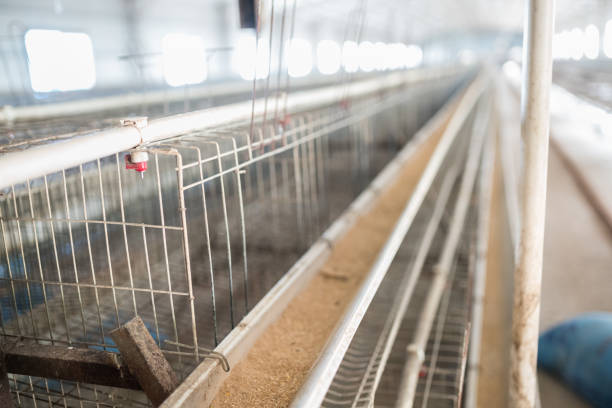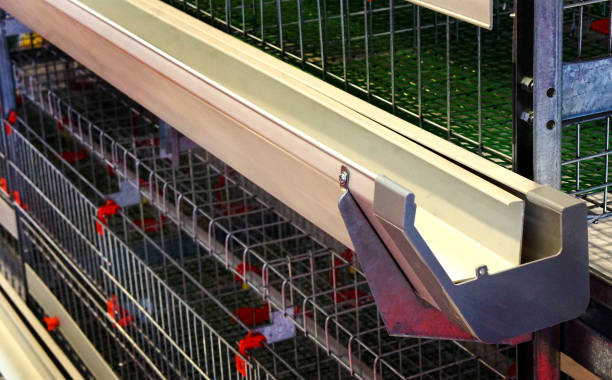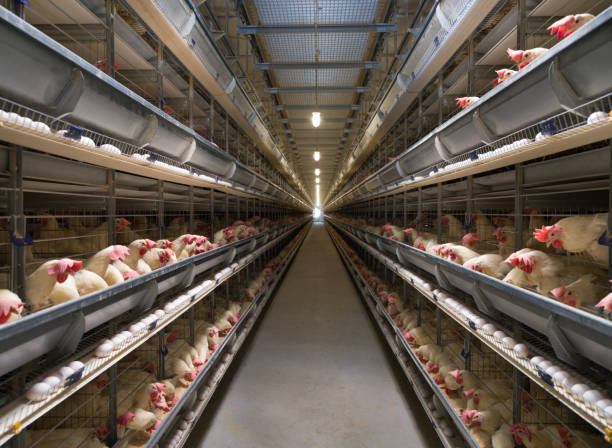
Maximize Profits: Choosing Cost-Effective Layer Cages in India
Maximize Profits: Choosing Cost-Effective Layer Cages in India
For Indian poultry farmers aiming to maximize profits in the egg production business, investing in the right layer cages is a pivotal decision. It’s not just about buying cages; it’s about choosing a system that optimizes bird welfare, simplifies management, reduces labor costs, and ultimately leads to higher egg yields and better returns. In this article, we’ll delve into the factors to consider when selecting cost-effective layer cages in India, highlighting the different types available, key features to look for, and the importance of partnering with a reliable supplier.
India’s poultry sector is dynamic and competitive, with a growing demand for eggs. As such, efficiency is the name of the game. Layer cages, when implemented correctly, can significantly improve various aspects of poultry farming.
Types of Layer Cages Available in India
Before diving into the selection process, it’s essential to understand the different types of layer cages available in the Indian market:
Conventional Layer Cages: These are the most traditional and widely used cages. They typically consist of rows of individual cages, each housing a specific number of birds. Conventional cages are generally the most affordable option upfront, making them a popular choice for smaller farms or those with limited capital. However, it’s crucial to consider the long-term costs associated with manual egg collection, manure removal, and higher labor requirements.
Automated Layer Cages: Also known as battery cages or A-type cages, these systems incorporate automation for feeding, watering, egg collection, and manure removal. They offer significant advantages in terms of labor efficiency and hygiene control. Although the initial investment is higher than conventional cages, the long-term operational cost savings can be substantial. A-type cages often offer better space utilization and improved ventilation compared to conventional systems. The automated manure removal system also helps maintain better hygiene, contributing to a healthier flock and reduced risk of disease.
H-Type Layer Cages: H-type cages, also known as vertical or multi-tier cages, represent the most advanced cage system available. They maximize space utilization by stacking multiple tiers of cages vertically, significantly increasing the number of birds that can be housed in a given area. H-type cages are fully automated, incorporating automatic feeding, watering, egg collection, and manure removal systems. They offer the highest levels of efficiency and control, making them ideal for large-scale poultry operations. However, the initial investment is also the highest.
Key Features to Look for in Cost-Effective Layer Cages
Once you’ve decided on the type of cage that best suits your operation, it’s time to evaluate specific features:
Cage Material and Construction: The quality of the materials used in the cage construction is paramount. Look for cages made from high-quality galvanized steel or corrosion-resistant alloys. These materials are durable, easy to clean, and can withstand the harsh conditions of a poultry environment. The cage design should be sturdy and well-constructed to prevent damage and ensure the safety and comfort of the birds. The steel wire should be smooth and have appropriate spacing to prevent injury to the chickens’ feet.
Cage Dimensions and Space per Bird: Providing adequate space for each bird is crucial for their well-being and productivity. Overcrowding can lead to stress, aggression, and reduced egg production. Follow recommended stocking densities for the specific breed of bird you’re raising. Consider the Indian government’s guidelines and animal welfare standards when determining cage dimensions. Ensure that the cage height is sufficient for the birds to stand comfortably.
Feeding and Watering Systems: Efficient and reliable feeding and watering systems are essential for optimal egg production. Look for cages with automatic feeding systems that deliver a consistent and uniform supply of feed to all birds. The watering system should provide clean and fresh water at all times, with nipple drinkers being a common and hygienic option. Ensure that the feeding and watering systems are easy to maintain and clean to prevent contamination.

Egg Collection System: The egg collection system is a critical component of layer cages. Automatic egg collection systems minimize egg breakage, reduce labor costs, and improve hygiene. Look for systems that gently transport eggs from the cage to a collection point, minimizing the risk of damage. The egg collection system should be easy to clean and sanitize to prevent the spread of disease.
Manure Removal System: Efficient manure removal is essential for maintaining a clean and hygienic environment, reducing ammonia levels, and preventing the spread of disease. Look for cages with automatic manure removal systems, such as belt systems or scraper systems. These systems remove manure from the cages on a regular basis, reducing the need for manual cleaning.
Ventilation and Lighting: Proper ventilation and lighting are crucial for the health and productivity of laying hens. Ensure that the cage system provides adequate ventilation to remove stale air and maintain a comfortable temperature. The lighting system should provide a consistent and uniform light intensity to stimulate egg production. Programmable timers can be used to control the lighting schedule.
Ease of Assembly and Maintenance: Choose a cage system that is easy to assemble and maintain. Detailed instructions and readily available spare parts are essential. The cage design should allow for easy access for inspection and cleaning. Regular maintenance is crucial for ensuring the longevity and optimal performance of the cage system.
The Importance of Partnering with a Reliable Supplier

Selecting a reputable and experienced supplier is just as crucial as choosing the right type of cage. A reliable supplier will provide high-quality cages, offer excellent customer service, and provide ongoing support and maintenance.
Here are some factors to consider when choosing a supplier:
Reputation and Experience: Look for a supplier with a proven track record in the poultry industry. Check their customer reviews and testimonials to gauge their reputation. Choose a supplier with experience in providing layer cages to the Indian market.
Product Quality and Certification: Ensure that the supplier’s cages meet relevant quality standards and certifications. Look for suppliers who use high-quality materials and manufacturing processes.
Technical Support and After-Sales Service: A reliable supplier will provide technical support and after-sales service to help you with installation, maintenance, and troubleshooting. They should be responsive to your inquiries and provide timely assistance.
Customization Options: Some suppliers offer customization options to tailor the cage system to your specific needs and requirements. This can be particularly beneficial if you have a unique farm layout or specific bird management practices.
Price and Payment Terms: Compare prices from different suppliers, but don’t make price the sole determining factor. Consider the overall value proposition, including product quality, features, and after-sales service. Discuss payment terms and financing options with the supplier.
Long-Term Cost-Effectiveness: Beyond the initial purchase price, consider the long-term operational costs associated with each type of cage. Automated systems may have a higher upfront cost but can lead to significant savings in labor, feed, and water consumption over time. Choose a system that offers the best balance between initial investment and long-term cost-effectiveness.

Regulations and Standards in India
It’s also essential to be aware of the regulations and standards governing layer cage systems in India. The Bureau of Indian Standards (BIS) sets standards for poultry equipment, including layer cages. Adhering to these standards ensures that the cages are safe, durable, and provide adequate space for the birds. Animal welfare regulations are also becoming increasingly important in India. Ensure that your chosen cage system complies with relevant animal welfare standards, providing adequate space, ventilation, and enrichment for the birds.
Maximizing Profits: A Holistic Approach
Choosing cost-effective layer cages is just one piece of the puzzle when it comes to maximizing profits in egg production. A holistic approach that encompasses efficient feeding strategies, proper disease management, and effective marketing is essential for achieving long-term success. Consult with poultry experts and nutritionists to develop a feeding program that optimizes egg production while minimizing feed costs. Implement a comprehensive biosecurity plan to prevent the spread of disease in your flock. Develop a marketing strategy to effectively promote and sell your eggs to consumers. By combining the right layer cage system with sound management practices, Indian poultry farmers can achieve significant improvements in efficiency, productivity, and profitability.
Ultimately, the decision on which layer cage to choose requires careful consideration of your specific needs, budget, and long-term goals. By understanding the different types of cages available, evaluating key features, partnering with a reputable supplier, and adhering to relevant regulations, you can make an informed decision that will maximize your profits and contribute to the sustainable growth of your poultry business in India. Investing in the right layer cages is an investment in the future of your poultry farm.
